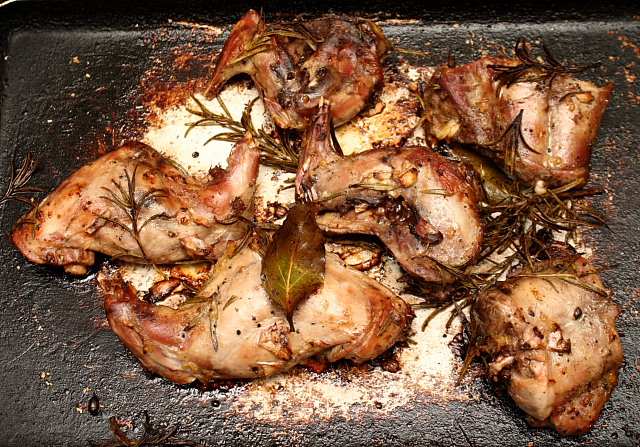Douglas Coupland’s Generation A is a story about a time when all the world’s bees have died and everybody is hooked on a drug that makes them want to be alone.
It’s full of Coupland’s characteristic little asides and stories, including one where the highly-politicised, overwrought and transitory girlfriend of one of the characters freaks out and leaves him when she discovers that he has a rabbit in the fridge for dinner.
I’ve experienced this sort of reaction to rabbit a couple of times, although it must be said that rabbit eating has never precipitated a change in personal circumstances on the scale that Coupland describes, but there have been a few people who’ve eyed me with deep suspicion on finding out that I eat rabbit sometimes.
There’s normally a little glance, and then a stare as they realise that, no, I’m not joking, I really do eat rabbit, and then there’s often a nervous silence whilst they try to work out what to say.
I normally stay quiet and let them feel uncomfortable. I know, I know…it’s a bit mean, isn’t it?
I don’t want to suggest that eating rabbit is taboo. It isn’t, not in the same way that eating horse meat is a complete no-go for the British (but, inexplicably, completely acceptable to the French).
There are more subtle qualities to the question of whether to eat rabbit or not.
People associate rabbits with cute childhood pets, and distance themselves from eating it for this reason, a misplaced loyalty to a long-dead pet, perhaps? This is an understandable position – cute does often equal hard to eat.
It’s understandable until you factor in the lamb effect, that is. All those militant rabbit lovers, so quick to eat a young spring lamb…
More than anything with rabbit and its status in the kitchen, the British have short memories.
Rabbit used to be a staple food, a cheap, lean and nutritious meat. During the war, many people kept rabbits and chickens to supplement the meager meat ration. Maybe it’s this association with wartime frugality and hardship, alongside the staged myxomatosis outbreaks of the 1950s which put people off eating rabbit and consigned it to a rural game speciality, something a little out of the ordinary.
People just lost the habit and rabbit fell out of fashion.
It’s interesting that a foodstuff as seemingly common as rabbit meat could fall so far out of favour in such a short period of time. It would seem inconceivable for this to happen today – imagine a world without chickens?
The real truth is that rabbit never really went away.
You’ve always been able to get rabbit from any decent butcher, who normally knows a farmer only too willing to earn fifty pence a head as a by product of vermin control.
But is it time for a rabbit revival? Should the humble bunny be back on our national plates?
I think you can probably guess where this is going, and if you’ve read this blog for any length of time, you’ll have noticed the odd rabbit recipe sneaking in here and there. Confit rabbit was particularly good, especially once I’d dredged the confitted pieces in breadcrumbs and deep fried them.
Rabbit has got a lot going for it. These are just some of the highlights:
- it’s cheap
- it’s relatively plentiful, if your butcher is worth his salt. You won’t normally find rabbit on a supermarket shelf, but you shouldn’t really be buying meat from a supermarket anyway. Find a good butcher and get to know him.
- the meat itself is high in protein, low in cholesterol and tends to be lean.
- a rabbit carcass also has a high proportion of meat to bone, meaning that you get more meat for your money.
- It isn’t particularly strongly flavoured – there’s a hint of gaminess about it, but that’s all – making it useful nearly anywhere where chicken would normally be used.
Yesterday, my rabbit dish was extremely rustic. I marinaded the jointed rabbit in a rough mixture of bashed up garlic cloves, bruised rosemary leaves, a good glug of rapeseed and olive oils and the juice and zest of a lemon. A good seasoning of salt and pepper went in as well and the whole lot sat in the fridge for the whole day before being roasted in a hot oven. The bigger, thicker shoulders and haunch pieces had about thirty-five minutes, the smaller bits about twenty-five.
Served with some bread and a simple tomato salad, this is rustic Italian food at its simplest and its best.
There’s no fuss and nonsense here, it’s just good flavours and ingredients that play well together.
And the cost?
Three quid.
Bargain.
Do you eat rabbit? If you don’t, tell us why not, and if you do, tell us why you love it.


